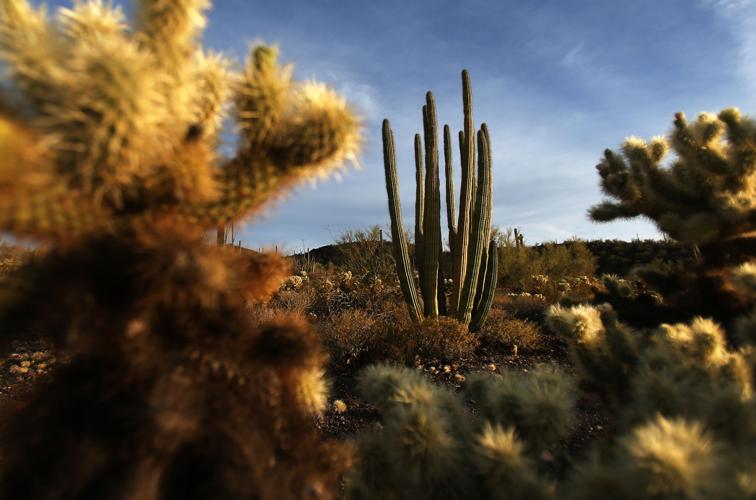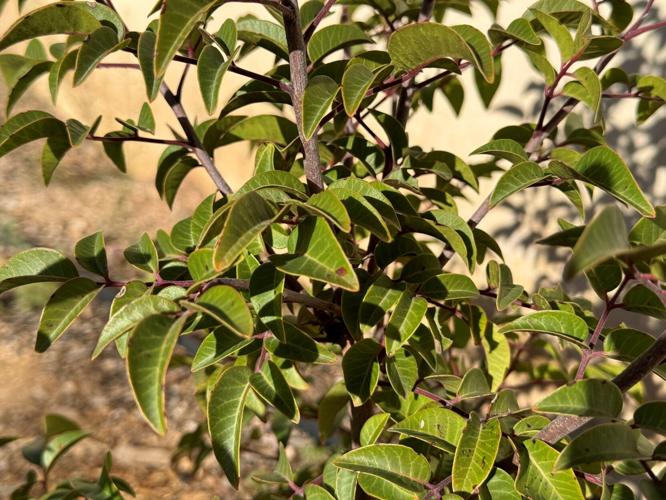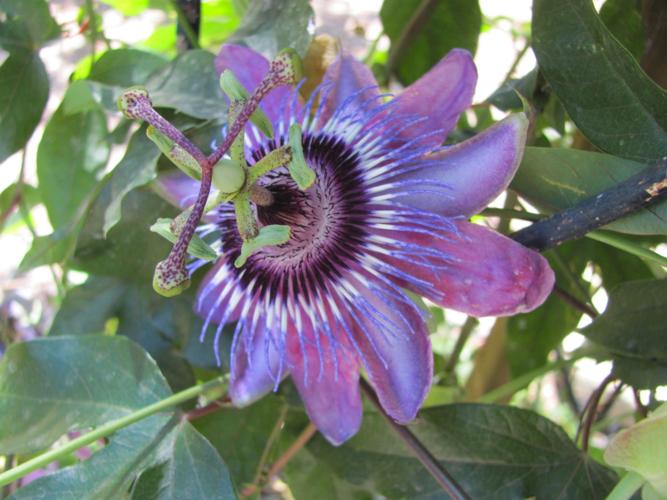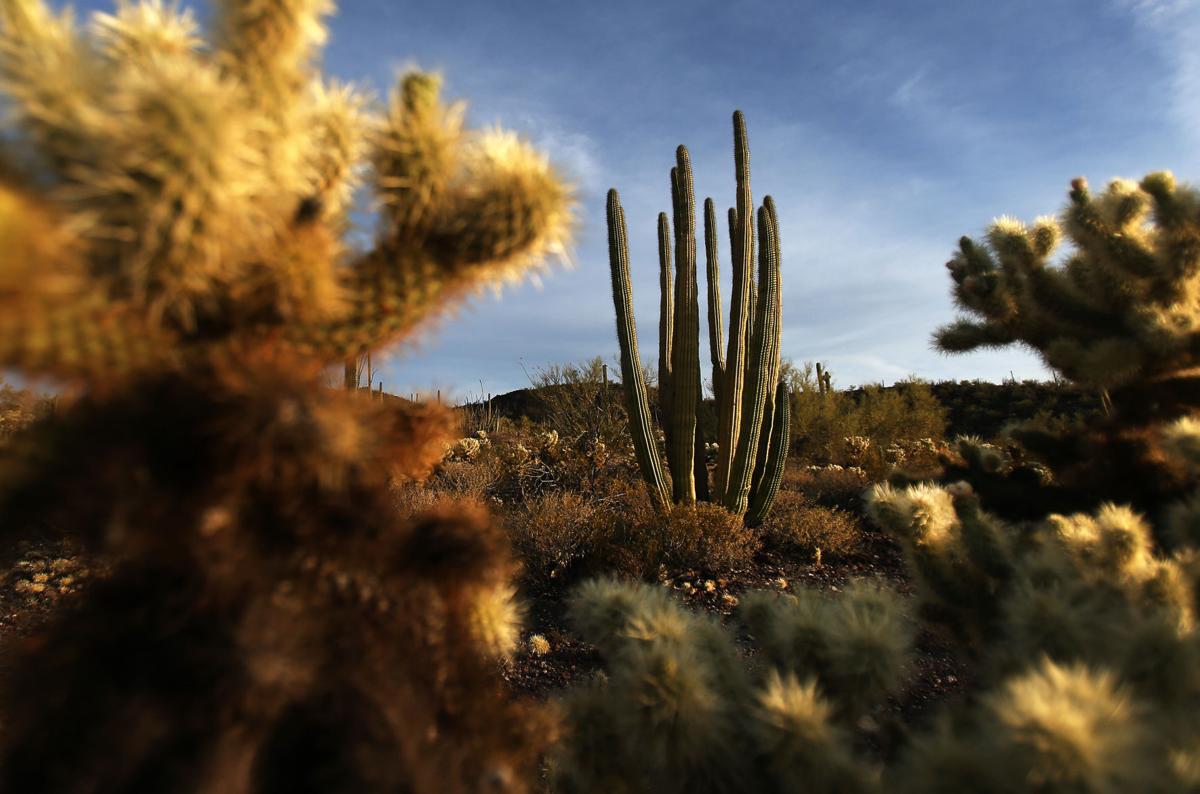We have a lot of choices in plants nowadays. Unfortunately, in unique ecosystems like Tucson’s Sonoran Desert, many of the plant choices at nurseries are non-native. This is not ideal for three main reasons.
First, non-native plants will almost always have a more difficult time getting established and thriving.
Second, the ones that do thrive are likely to become invasive, crowding out our native plants.
And third, non-native plants turn our backyards into relative food and habitat deserts for local wildlife, particularly insects and smaller creatures that form the backbone of the food web.
For these reasons, it would be ideal if we would use our yard space for native plants, which not only provide us with beauty but also provide all of the critters that make our survival possible with a place to eat, live and reproduce. This idea was championed by Doug Tallamy, an entomologist, in his book "Bringing Nature Home." Tallamy now promotes his Homegrown National Park concept and encourages homeowners and businesses to increase the amount of viable ecosystem space by planting native plants.
In that spirit, here are six alternatives to non-native plants. These can be found in local nurseries, including Desert Survivors, Spadefoot Nursery, Civano Nursery, B & B Cactus Farm, Harlow Gardens and Bach’s Cactus Nursery to name just a few.
Plant native cacti instead of nonnative cacti. Cactus nurseries sell many different species of cacti, some of which originate from South America, so it’s important to read the label. Our native cacti will provide habitat and food for our native insects and birds and other small animals. We have so many varieties to choose from, you will be sure to find one that fits your yard. The Arizona Sonora Desert Museum has an excellent overview of the native Sonoran Desert cacti.

Evergreen sumac is a lovely native shrub with thick foliage that birds and other animals love.
For a larger, evergreen screening shrub, plant sugar bush (Rhus ovata) and evergreen sumac (Rhus virens) instead of oleander (Nerium oleander). Oleander, besides being from the Mediterranean region, has many negatives, which I’ve discussed in my article “5 alternatives to toxic oleander for your Tucson garden” and I always encourage people to try a different plant. The native Rhus shrubs have beautiful foliage, are hardy and very drought-tolerant. They are excellent for birds, as well.
For a groundcover plant with yellow flowers, plant yellow dalea (Dalea capitata) instead of yellow lantana (Lantana camara, numerous varieties). Yellow dalea grows about 1 foot tall and up to 4 feet wide and is a great candidate for any areas that require groundcover, as well as for planters. It smells lemony when you brush against it, making it a nice plant for high-traffic areas. Hummingbirds and other pollinators love it. Be prepared to protect it from bunnies until it gets big enough to tolerate their browsing.
For a wall-climbing vine, plant Arizona grape (Cissus trifoliata) not nonnative ivy like Boston ivy (Parthenocissus tricuspidata). This plant is dioecious, which means you need both the male and female plants nearby to have fruit. The grapes vary in taste, but are edible just like regular grapes. The Arizona grape is riparian and likes to grow in canyons, so it’s a particularly good candidate for north-facing walls. It does like a bit of extra water in summer, but will be more suited to our climate than any of the non-native ivies or grapes.
For a smaller, evergreen flowering shrub, plant shrubby senna (Senna wislizeni), not Australian feathery senna (Senna artemisoides). Our native senna is very drought-tolerant, has similar flowers and grows to a similar size as the Australian version. It is particularly important for native bumblebees which are in extreme decline. Shrubby senna’s beautiful yellow flowers and dark green foliage make for a lovely plant. It’s also very hardy (to 0 F) making it a great option for higher elevations. Australian senna has the unfortunate tendency to spread easily and take over a yard.

Passion flower vines have hundreds of species. Three are native to Arizona, and act as hosts for Gulf Fritillary butterfly caterpillars.
For a flowering vine, plant Arizona passion vine (Passiflora arizonica) not bougainvillea (Bougainvillea spp.). It does prefer part shade, so you can’t plant it in full sun like you can bougainvillea. As a bonus, the fruit is edible, just like other passionfruit, although is likely to be much smaller and more tart than the passionfruit you get at the store. The flowers are spectacular, and the foliage has delicate lush green leaves. The entire plant contains cyanide, except for ripened fruit, so it’s not ideal for gardens with small children or overly chewy dogs.
Watch now: These beautiful native plants will be a great addition to your Tucson garden. Video by Dominika Heusinkveld/Arizona Daily Star.







